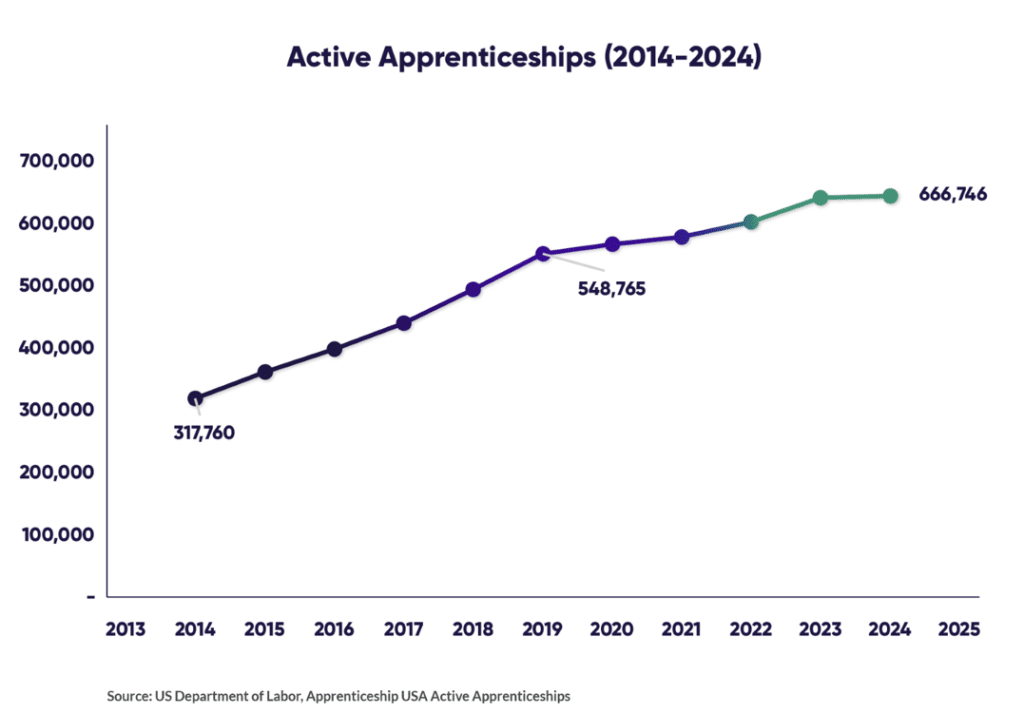Every year, EducationDynamics welcomes marketing, enrollment, admissions, and higher education leaders from across the nation for InsightsEDU—a higher education conference dedicated to uncovering emerging trends and innovative solutions that help colleges and universities enhance reputation and grow revenue. In 2025, InsightsEDU will be hosted in New Orleans, Louisiana at the Ritz Carlton from February 12-14, 2025.
With 40+ subject matter experts, and 38+ sessions, InsightsEDU is designed to equip attendees with the knowledge, tools, and strategies necessary to successfully engage the Modern Learner. Discover key benefits you will experience by attending InsightsEDU 2025.
Benefits of Attending a Higher Education Conference like InsightsEDU
1. Gain Timely Insights into the Modern Learner
There is no doubt that higher education is undergoing a shift. The Modern Learner, who increasingly values flexibility, personalization, and cost-effectiveness, is driving much of this transformation. This year’s conference theme, “The Era of the Modern Learner,” reflects this pivotal moment in education.
InsightsEDU will help higher education marketers adapt strategies to meet the needs of these students, by equipping them with practical insights on how Modern Learners interact with enrollment teams, make decisions, and engage with content. Understanding these dynamics will allow higher ed professionals to tailor marketing and enrollment strategies to better address the demands of today’s students, while demonstrating value and personalization.
2. Network with Fellow Institutional Leaders, Experts, and Professionals Nationwide
InsightsEDU is more than a learning opportunity; it is also an unparalleled networking opportunity for the higher education community. With over 100 colleges and universities represented, InsightsEDU brings together a diverse group of higher education professionals, including institutional leaders, marketers, admissions professionals, and experts from across the nation and even abroad.
Throughout the conference, attendees will experience everything from informative sessions and panels to networking events infused with New Orleans’ flair. These interactions will provide attendees with opportunities to build lasting connections with fellow professionals who share a commitment to advancing higher education initiatives. Additionally, attendees will be able to participate in discussion forums and stay connected to professional connections through the conference app, allowing attendees to stay engaged even after the conference ends.
3. Access Tailored Strategies for All Student Demographics
InsightsEDU is dedicated to helping professionals connect with today’s diverse student populations through targeted, practical strategies. For traditional students, attendees will explore ways to create personalized outreach and recruitment campaigns that highlight flexibility and value. Sessions focused on online students will uncover data-driven marketing methods and innovative enrollment strategies that address their desire for convenience and personalization. For graduate students, attendees will explore strategies that leverage career-focused messaging and a clear return on investment for advanced degrees.
Attendees will leave InsightsEDU equipped with powerful, actionable strategies tailored to the unique needs of various student demographics—empowering them to drive success and lead in a changing higher education landscape.
4. Experience Expert-Led Sessions Focused on Real-World Solutions
At InsightsEDU, attendees will engage with a stellar line-up of speakers covering the latest trends and challenges in higher education. Our conference agenda features 38+ sessions from industry experts, each with unique and data-backed perspectives on topics such as personalized digital marketing, enrollment management, and student success. With expert perspectives from organizations like Google, Meta, Reddit, EY Parthenon and more, attendees will learn how to apply the latest trends and technologies to enhance their approach. Additionally, attendees will gain exclusive insights to groundbreaking tools and data, including the latest Online College Students Report, giving them a first look at critical insights into today’s students.
Unlock the Future of Higher Education at InsightsEDU 2025
InsightsEDU 2025 is the must-attend conference for higher education professionals who are committed to staying ahead of the curve and driving impact within education. Don’t miss the opportunity to be a part of this innovative event, designed to provide you with strategies and insights for success in higher education.
We look forward to seeing you at InsightsEDU from February 12-14! Register today and secure your spot.



















